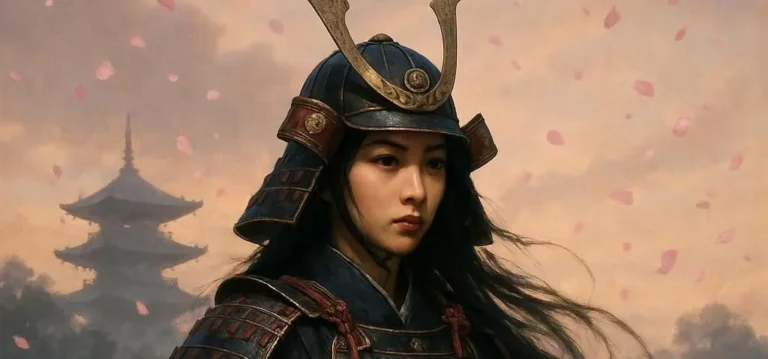509 views Secrets of the Katana: Symbolism of Japan’s Most Sacred Blade
Introduction
The katana, Japan’s revered single‑blade sword, is more than a weapon; it is a cultural emblem that encapsulates centuries of philosophy, artistry, and spirituality. While most people recognize its distinct crescent‑shaped curve and the poetic elegance of its silhouette, fewer understand the layered symbolism woven into every aspect of the blade—from the steel itself to the handle, guard, and the rituals surrounding it. In this article we peel back the layers of symbolism underpinning the katana, exploring how it reflects Japan’s sacred traditions, the Bushido code, and the timeless quest for inner harmony.
1. The Historical Roots of the Katana
The Birth of a National Treasure
The katana’s earliest ancestors trace back to the Heian period (794‑1185), when steel was forged from smelted iron sand. Initial blades were thicker and more utilitarian, but the gradual refinement of all‑tin and crucible steel (tamahagane) in the Kamakura period (1185‑1333) produced thinner, sharper swords that gave the katana its iconic curve.
From Utility to Symbol
By the Muromachi period (1336‑1573), samurai began to see the blade not merely as a tool of warfare but as a representational conduit of personal, social, and divine values. The katana became a physical expression of a warrior’s soul—one that demanded unwavering discipline and ethical fortitude.
2. Craftsmanship: Where Art Meets Metallurgy
The katana’s symbolism is first etched into the metallurgical process.
- Tamahagane Steel – Derived from sand ore found in the riverbeds of the Japanese archipelago. The meticulous layering of 10‑75% carbon content yields a steel that is both hard and flexible.
- Damascus-Like Patterns – The contrasting layers visible on the blade’s face are not merely aesthetic; they signify the unity of strength (hardness) and resilience (flexibility) – qualities essential for the samurai’s spirit.
- Shaping Technique – Tataki (hammering) and tate (bending) direct the grain of the blade, known as migaki, which flows like a living fluid, symbolizing how one’s path must adapt to surface conditions.
This meticulous craftsmanship is a silent acknowledgment of the Kokoro (heart/mind) that must be honed alongside the steel: the blade’s aesthetic and functional excellence mirrors the samurai’s ethical and emotional refinement.
3. The Core Symbolic Elements of the Katana
| Element | Symbolic Meaning | Cultural Significance |
|———|——————|———————–|
| Kamae (blade orientation) | Facing forward reflects readiness and humility to confront uncertainty | Signifies continuous vigilance in daily life |
| Tsuka (handle) | Usually wrapped with deer‑hide or silk; the natural fibres embody endurance | Represents the link between spirit and body; indicates the owner’s heritage |
| Tsuba (guard) | Resistive shape counters the blade’s sharpness; intersects with tsuka | Acts as a symbol of emotional balance: restraining aggression while protecting identity |
| Fuchi (blade core) | The heart of the sword, often made of a single iron piece | Mirrors the core values of a samurai: integrity, honor, and courage |
| Kobujutsu (blasphemy, i.e., go‑ko) | A ritual purification and naming ceremony | Mark the transition from gear to soul of the tool |
Each element is a living metaphor. The katana is not only a physical weapon but a ritual artefact—each component harmonizes to generate a cohesive narrative of justice, spirituality, and self‑discipline.
4. The Katana and the Bushido Code
The Bushido code—”the way of the warrior”—codified a moral framework where the katana is a living testament. The code segments, such as Gi (righteousness), Yu (courage), and Rei (respect), are simultaneously:
- Kiritobi: A symbolic bridge between intent and execution, mirrored in the precision required to swing the blade.
- Matsu (perseverance): The blade’s resilience under repeated strikes represents unwavering perseverance.
- Chishin (loyalty): The bond between owner and sword—where the sword often bears a go‑ko personally inscribed by the smith.
When a samurai enters battle, the steel becomes an extension of these virtues. After the war era, the katana’s symbolism continued as an emblem of national identity and an archetype of disciplined heritage.
5. Spiritual Dimensions: The Katana as a Sacred Object
Kami and the Blade
In Shinto cosmology, each natural element is infested by kami—spirits or deities. The katana welcomes this belief, where the forge itself is a liminal space that transforms raw iron into a vessel for kami. The smith’s meditative practice localizes the this practice, offering spiritual rectification.
Kiai: The Sword’s Breath
The concept of kiai, meaning a shout that espouses intention, is directly linked to a sword‑burning ritual in training. The kiai connects the ruler’s breath to the blade’s momentum. Marked by the crack of the sword, kiai is akin to a trespassing of the soul.
Presence in Rituals
- Hōgun Ceremony: The solemn unveiling of a newly forged katana. The ceremony involves the seven‑fold purification of the blade, summarizing the soul’s elevation, leaving the weapon sanctified before and after battle.
- Jinkoku: A daily maintenance routine where samurai polish their katana, a metaphor for constant self‑improvement.
These rituals transform hands‑work into an almost liturgical act, infusing the katana with reverence that evolves beyond the battlefield into everyday morality.
6. Katana in Literature & Film: Cultural Resonance
- Miyamoto Musashi’s “The Book of Five Rings” holds the katana not only as a weapon but as a mindset. The strategic interplay of swords in the text emphasises strength, balance, and timing, mirroring a life philosophy.
- Akira Kurosawa’s “Seven Samurai” uses the katana as a narrative thread, juxtaposing the heroic mayhem with a reflection on duty. The film’s recurring motif—each samurai holding a distinct blade—shapes the ethos of the collective destiny.
- Modern Animated Series (e.g., ‘Rurouni Kenshin’ or ‘Sword Art Online’) highlight the katana’s allure as an icon of transformation, rekindling interest among a younger audience while preserving cultural heritage.
Readers and viewers see the blade as an archetype of personal growth—a symbol capable of bridging time and geography.
7. Katana in Contemporary Society
Revival in Heritage Crafts
Over the last decade, tatami‑guilds have revived the yakimono technique, rekindling regional forging styles that honor local minzoku (ethnicity). Artisans now embody the katana’s symbolism through indy‑style fusions of forges with natural landscapes, aligning steel with the geist of the area.
Modern Martial Arts
Kendo, the modern sword practice, still channels the katana’s core symbolism through disciplined headings, judan (beats) and uke (defense). The sport underlines principles of mushin (mind‑free) and honoring opponents—a reflection of original principles.
Pop‑Culture Identity
The katana is the emblem of countless video game franchises—‘Sekiro,’ ‘Ghost of Tsushima,’ and ‘Samurai Jack.’ It remains a cultural icon that conjures an atmosphere of historical authenticity and willingness to transcend the ordinary.
8. How to Appreciate the Katana Beyond the Battlefield
| Perspective | Symbolic Lens | Suggested Action |
|————-|—————|——————-|
| Collector | Legacy + Continuity | Initiate a personal go‑ko tradition: sponsoring a smith and having a custom blade saluted during your own matsu celebration |
| Artist | Interversion of Form | Use the katana’s indentation patterns as silhouette inspiration for contemporary sculpture |
| Philosopher | Ego vs Self | Engage in reflective journaling while meditating on the blade’s curve, transmuting thoughts into kiai |
By consciously exploring these facets, individuals can experience deeper layers of self‑reflection and cultural appreciation.
Conclusion
The katana is far more than a blade that cleaves flesh and bone—its very architecture, material properties, and ceremonial usage embody a potent narrative of Japanese civilization. From the precision of its forging to the ghost‑like will it carries into metaphysical realms, every investment of time and effort becomes a cultural contribution.
When you hold a katana—or even simply read about it—take a moment to appreciate the soul behind the steel. The blade’s curvaceous storytelling illustrates that true power does not come from brute strength alone but from an alignment of mind, body, and spirit. Embracing this truth allows us to bring the ancient spirit of the katana into modern living, turning every small act into a graceful strike of purpose.
SEO Highlights:
- Katana symbolism explained
- Japanese blade meaning & cultural significance
- Spiritual dimensions of samurai swords
- Katana and Bushido: a cultural link
- Contemporary katana practices and revivals
With every edge, the katana whispers a timeless devotion that mentors us toward a life forged in discipline, respect, and an understanding of the unseen fibres that connect us all.





